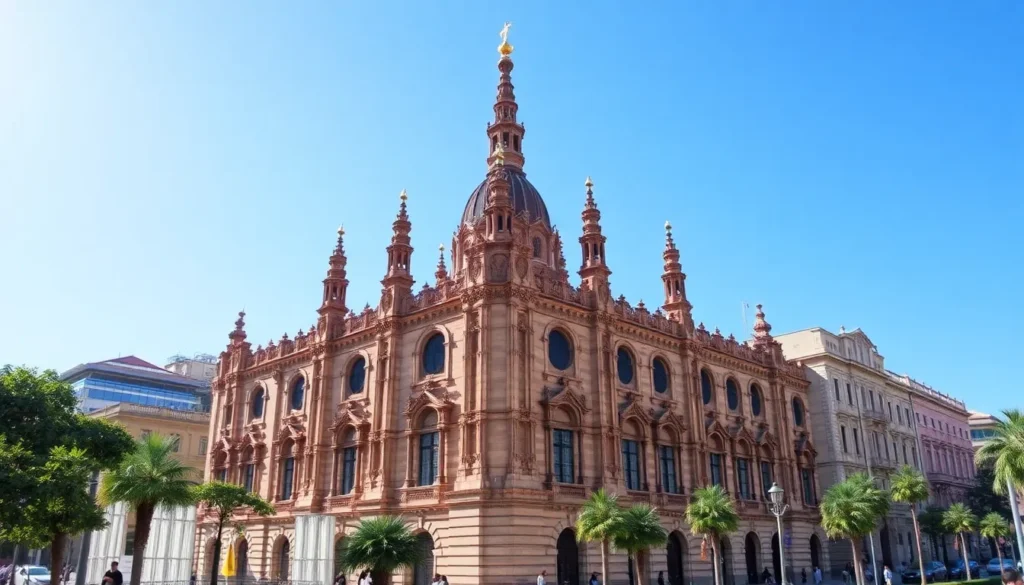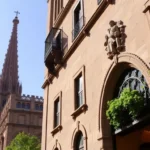35 intriguing facts about Barcelona you may not know

Barcelona is not just one of the most beautiful cities in the world; it is a mesmerizing tapestry of history, culture, and hidden gems. Every corner tells a story, every street is filled with life, and every landmark has a unique twist. In this article, we will delve into 35 fascinating facts about Barcelona that you may not have known, giving you a deeper appreciation for this vibrant city.
Interesting facts about Barcelona
1. La Pedrera, one of Barcelona's iconic buildings designed by Antoni Gaudí, was once a source of controversy. Many locals criticized it, comparing its shape to that of a "Pascua cake," but today it stands as a testament to modernist architecture and creativity.
2. The first time we strolled down La Rambla, we were captivated by a dragon sculpture. We initially thought it was a Chinese restaurant, but it turns out the dragon holds an umbrella, marking the spot of an old umbrella shop. Talk about a culinary misunderstanding!
3. The Canaletas fountain has become a celebratory landmark for FC Barcelona fans. Historically, the results of matches were posted on a banner nearby, making it a natural gathering place for fans rejoicing in victory.
4. Legend has it that drinking from the Canaletas fountain ensures your return to Barcelona. So, if you're planning a visit, don’t forget to sip from this local treasure!
5. At Plaza de España, you’ll find two towers that mimic the bell tower of San Marco in Venice. Their architect drew inspiration from Venice, creating a mini homage to the Italian city.
Historical gems and quirky spots
6. The Tibidabo amusement park houses a replica of the first commercial airplane that flew over Spain. This historic red Iberia plane took off in December 1927 from Barcelona to Madrid, marking the beginning of air travel in Spain.
7. In the Plaza del Rey, you can visit the Palau Reial Major, once one of the highest buildings in Europe. Its architecture continues to inspire awe, reflecting the rich history of the Catalan monarchy.
8. Barcelona boasts a smaller version of the Statue of Liberty located in the Arús Library on Passeig Sant Joan, 26. While smaller and darker, it remains a symbolic representation of freedom.
9. One of the most recognizable statues in the city is that of Christopher Columbus, located at the end of La Rambla. Contrary to popular belief, he points not towards America but towards Genoa, his birthplace.
10. Barcelona is home to over 20 Michelin-starred restaurants. For those on a budget, there are plenty of reviews and guides available that highlight where to eat affordably without sacrificing quality.
Unusual dining experiences
11. Hidden in plain sight, a souvenir shop at 300 Carrer de Provença conceals a clandestine restaurant called Chi Ton, serving exquisite Asian cuisine.
12. Contrary to popular belief, Barcelona has two official languages: Catalan and Spanish. Most Catalans are friendly and will switch to Spanish if they notice you struggle with Catalan.
13. When visiting the Basilica of Santa Maria del Mar, pay close attention to the stained glass windows, as one features the iconic FC Barcelona crest, a nod to the club's role in the church’s restoration after the Civil War.
14. Adjacent to the basilica, a flame symbolizes the victims of the 1714 siege by Felipe V's troops. This eternal flame serves as a poignant reminder of Barcelona's turbulent history.
15. On the Passion façade of the Sagrada Familia, you’ll find a unique puzzle of numbers that sum to 33, representing the age of Jesus at his death—an intriguing detail that adds to Gaudí's mystical architectural language.
Architectural marvels and urban myths
16. Barcelona almost welcomed the Eiffel Tower within its borders! The project was ultimately rejected due to architectural discrepancies with the city’s aesthetics.
17. A visit to the Plaza de San Felipe Neri is essential. The scars on its church walls tell tales of the Civil War, making it a significant historical site for those interested in Spain’s past.
18. Two dates to remember when in Barcelona include Sant Jordi (April 23), where men gift roses and women reciprocate with books, and La Mercé (around September 24), a vibrant festival filled with parades and performances.
19. The Sagrada Familia remains unfinished, with an expected completion date in 2026—144 years after its inception. Its construction relies on donations, contributing to the lengthy timeline.
20. The brilliant architect Antonio Gaudí met a tragic fate when a tram hit him, leaving his enduring legacy etched in Barcelona’s skyline.
Barcelona's unique characteristics
21. It might be hard to believe, but Barcelona didn’t have sandy beaches until the 1992 Olympics—only a rugged coastline existed before then. Now, the beaches are a staple of city life.
22. Barcelona has 12 ghost metro stations, each steeped in mystery and local legends, waiting to be explored by the curious.
23. The city is dotted with antiaircraft shelters built during the Civil War. A visit to Refugio 307 in Poble Sec offers a glimpse into this turbulent period in Barcelona’s history.
24. Portal del Ángel isn’t just one of Spain’s most expensive shopping streets; it attracts over 100,000 visitors daily, making it a bustling hub of activity.
25. For those who love nature, the Laberinto de Horta is a beautiful labyrinth that has served as a film location and a serene escape from the city’s hustle.
The essence of the Gothic Quarter
26. The Gothic Quarter is a fascinating blend of architectural styles, with many famous buildings dating back to the 20th century instead of the medieval period as one might expect.
27. Scattered throughout the Gothic Quarter and El Born are sculptures of women's heads, which historically indicated the locations of brothels in medieval times.
28. Among Barcelona's unique inhabitants are the Argentinian parakeets. While their vibrant colors attract tourists, they have also become somewhat of a nuisance due to their growing population.
29. Barcelona is often referred to as the Condal City, a nod to its medieval roots when it was governed by various counts, with the Count of Barcelona being the most significant.
30. The legendary Teatro Liceu is wrapped in tales of misfortune, with a supposed curse that led to multiple devastating fires, including one in 1994.
Dark tales and cultural curiosities
31. Barcelona had its own version of Jack the Ripper—a woman named Enriqueta Martí Ripollés, who earned the chilling nickname "vampire" for her heinous crimes against children.
32. Since 2010, bullfighting has been illegal in Barcelona, reflecting the city's evolving cultural values.
33. In the Raval district, a round window known as the orphan's turn served as a means for mothers to anonymously give up their children for care by nuns.
34. The Cloister of the Barcelona Cathedral is home to 13 geese, symbolizing the 13 tortures endured by Saint Eulalia, who bravely upheld her Christian faith.
35. Near the cathedral, the Casa de l’Ardiaca features a symbolic mailbox adorned with golondrinas (swallows), ivy, and tortoises, representing the complexities of justice and bureaucracy.
These facts about Barcelona will enrich your next visit, allowing you to discover the city from a unique perspective, steeped in history and intrigue.
| Ahorra en tu viaje |
| Compara y consigue vuelos baratos aquí |
| Encuentra alojamiento a los mejores precios aquí |
| Reserva actividades y excursiones en español aquí |
| 5% de descuento en tu seguro de viaje IATI aquí |
| Reserva los traslados desde el aeropuerto aquí |
| Regalo de 10€ reservando el transporte por Europa aquí |
| Averigua cómo sacar dinero sin comisiones aquí |
| Descuento del 5% en tu eSIM de Holafly aquí |
| Alquila un coche con las mejores ofertas aquí |
| Compara precios del alquiler de furgonetas aquí |
| Los mejores libros y guías de viaje aquí |
| Todos nuestros artículos sobre España |
* Photocredit: Shutterstock

Deja una respuesta